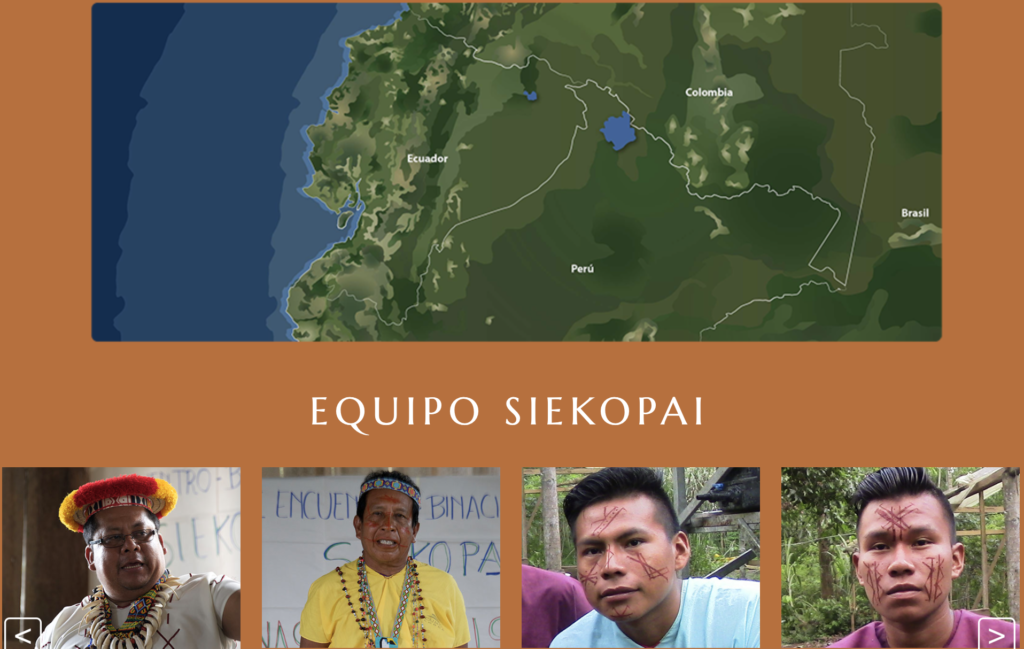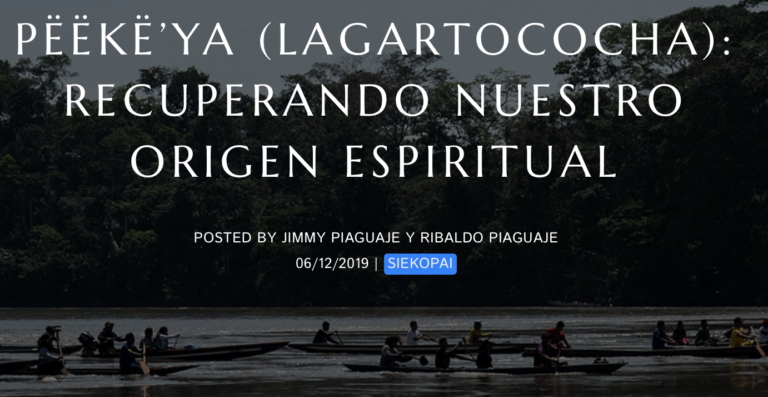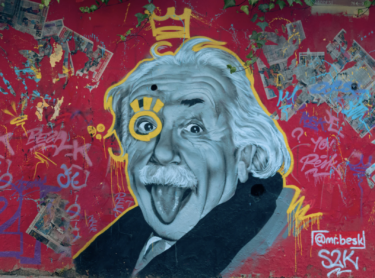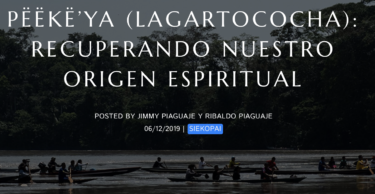はじめに
mythとは神話だ。mythologyは神話学となる。ミステリーも派生語かと思ったけど、mysteryとスペルが全然違った。ミラクル(miracle)も音は似ていて神業となる。ミゼラブル(miserable)は日本語では悲惨なとか、卑劣なと言う意味となる。どうも、「み+す」は神がかった言葉が多いような気がする。前回のアインシュタインは非常にわかりやすくかったけど、今回の動画は正直ノンネイティブには難解だった。
盗まれた眼球神話(the myth of the stolen eyeballs)
タイトルもサイケデリックな感じだ。一体どんな神話で、どこの神話なのだろう。何を教訓として伝えようとしているのだろう。全くわからない。難解だけど、チャレンジ精神のある人にはぜひ試聴して欲しい。自分は、何度見ても理解できず途中で夢の世界に何度も引き込まれていった。
(出典:YouTube)
シエコパイの伝説(Siekopai legend)
なぜ難しいかといえば、背景が分からないからかもしれない。動画の最後に「霊界と人間界が交わるシエコパイの伝説では、明確な勝者は存在せず、死さえも再生の機会なのである(In Siekopai legend, where the spirit and human worlds meet, there are no clear victors, and even death is an opportunity for renewal.)」と言う文章で終わっている。これがヒントなのかもしれないと調べると、シエコパイの大国はアマゾンの原住民であり、現在のエクアドルとペルーの領域の民族はアマゾン平原の中心に住んでいた天空の精霊の子孫であると伝えられている。この精霊が「ニャーニェ・シエコパイ(Ñañë Siekopai)」であり、その民族がシエコパイ族となる。このシエコパイ族に伝わる神話が今回の動画なのかもしれない。

(出典:alianzaceibo)
動画のあらすじ
英語のスクリプトを日本語にして、大幅にあらすじのみにまとめると次のような感じだろうか。
8つの質問
Q1) What did the air goblin chief mean when he talked about “siripia fruits”?
ゴブリンの長がシリピアの実(siripia furuits)と言ったのは何か?答えは人間の目だ。ゴブリン族は人間の目を大好物にしているようだ。Air Goblinがまずわかりにくいけど、これは空を飛ぶ霊界の悪魔という意味がありそうだ。
Q2) What did the young shaman not learn from the air goblins?
シャーマンはゴブリンの長から、いろいろなことを習った。エアゴブリンに復習する方法も、かごの編み方も、親族に新しい目を与える方法も教わった。教わっていないのは、魚の取り方だ。
Q3) What is barbasco?
バルバッコとは何か? これは分からなかったけど、カヌーでも魚でも木でもなく、毒物(Poison)だった。
Q4) Which of these animals does not eat people in the story?
この物語の中では、ジャングルの動物が人を食べた。人を食べなかったのは、魚(Fish)だ。
Q5) Which transformation is not part of the story?
パイナップルの新芽が犬に変身した。シャーマンの姉は目を食べられてタネ与えたら目になったけど、残念ながらノブタになった。魚はジャガーに変身していないので、これが正解だ。
Q6) Why do you think the air goblin chief revealed to the young shaman the method to get revenge on his people?
ゴブリンの長は、若いシャーマンになぜ復讐する方法を明かしたのか?これは難しい。記述式なので、正解も分からない。個人的にはシャーマンを気に入ったのだと思った。
Q7) If supernatural beings such as air goblins existed, how might their understanding of life and death differ from that of humans?
超自然的な存在であるエアゴブリンは、自然の脅威を示しているのかもしれないし、より進んだ文明を持つ民族だったのかもしれない。自然界の時の流れは、人間の時の流れよりも長く、悠々としている。日本でも、織田信長が好きな言葉「人間五十年、下天の内をくらぶれば、夢幻の如くなり」もこれに通じることなのではないかと思う。生物の個々の命は短くても、子孫に命をバトンタッチすることで生物は永遠の命を手に入れたといえる。
Q8) If you were one of the people who went to the lake, would you pay attention to the young shaman’s advice, or would you go ahead and start poisoning the fish?
現在の環境問題もこの構図と言えるのではないか。生きるために魚を取るために湖に毒をもる。それが結果的に自らの命を縮めることになることを知っていてもやめられない。これは非常に教訓的だ。
まとめ
神話とは、先祖からの教えを伝える物語という側面があると思う。今回のシエコパイの伝説も若いシャーマンがエアゴブリンの長から多くの教えを受け、それを守ることで命をつなげることができた。ただ、エアゴブリンの長が若いシャーマンに復習の方法まで教えた理由は分からない。若いシャーマンに好意を持ったのか、それとも哀れに思ったのか、ヒトが全滅するのを心配したのか、多くの考え方があるけど、大自然の神と考えれば、素直に真摯に自然と向き合うヒトには大自然は時に凶暴にもなるけど、普段は優しく穏やかな存在なのではないだろうか。性善説で考えたいと思う。
以上
最後まで読んで頂きありがとうございます。
拝
参考:英語のスクリプト
Deep in the Amazon rainforest in the river Nea`ocaya, lived, according to Siekopai legend, a school of particularly big and tasty fish. When the rains came and the water rose, the fish appeared, swimming away as the waters fell again. The villagers along the river revealed in this occasional bounty – and wanted more. They followed them upriver deep into the jungle to a lagoon that thundered with the sound of flapping fish.
The whole village set up camp by the lagoon, bringing barbasco, a poison they would put in the water to stun the fish. Meanwhile, their young shaman took a walk. He sensed he might not be completely alone. Then, he came to a monse tree humming so loudly he could hear it even above the thunder of the fish. With that, he was sure: spirits lived here. Back at camp, he warned his people these fish had an owner. He would find the owner. Until he returned, no one should fish. He went to the humming tree. Inside was a hollow as big as a house, full of busy weavers. Their chief invited、 him in, explaining that the juicy little siripia fruits were ripening, and they were weaving baskets to collect them.
Though they looked and acted like people, the shaman knew they were juri, or air goblins, who could fly and control the winds. They taught him how to weave. Before the shaman left, the goblin chief whispered some cryptic instructions in his ear. Finally, he told him to tie a pineapple shoot outside a hollow log, and sloop inside that night.
Back at camp, the villagers were fishing with barbasco poison, cooking, and eating. Only the seaman’s little sister refrained. Then, everyone else fell into a deep sleep. The shaman and his sister yelled and shook them, but they would not wake.
It was getting dark, so the shaman and his sister tied the pineapple sprout outside the following log and crawled inside. A strong wind rose – the mark of the air goblins. It broke branches and brought down trees. Caymans, boas, and jaguars roared. The water began to rise. The fish flopped off the drying racks and swam away.
The pineapple sprout turned into a dog. All night it barked, keeping the jungle creatures away from the fallen tree. When dawn broke, the flood receded. The fish were gone, and most of the people were, too: the jungle animals had devoured them.
Only the shaman’s relatives survived. When his family turned toward him, the shaman realized what the goblins meant when they said the fruits were ripening: they were not really collecting siripia fruits at all, but human eyes. The shaman’s older sister called him over, trying to touch his face with her long, sharp nails. He backed away and, remembering the goblin chief’s instructions, threw palm seeds at her face. The seeds became eyes.
But then she transformed into a white-lipped peccary and ran away – still alive, but no longer human. The shaman and his little sister’s whole community were gone. They went to live with another village, where he taught everyone to weave baskets, as the air goblins had taught him. But he could not forget the last of the goblin chief’s words, which told him how to get revenge.
He returned to the air goblins’ home carrying chili peppers wrapped in leaves. As the goblins watched through their peepholes, the shaman made a fire and put the chili peppers on it. The fire began to smoke the tree out. The goblins who had eaten people’s eyes died. Those who had not were light enough to fly away. So the goblins, like the humans, paid a steep price. But they also lived to tell the tale, like the shaman.
In Siekopai legend, where the spirit and human worlds meet, there are no clear victors, and even death is an opportunity for renewal.




